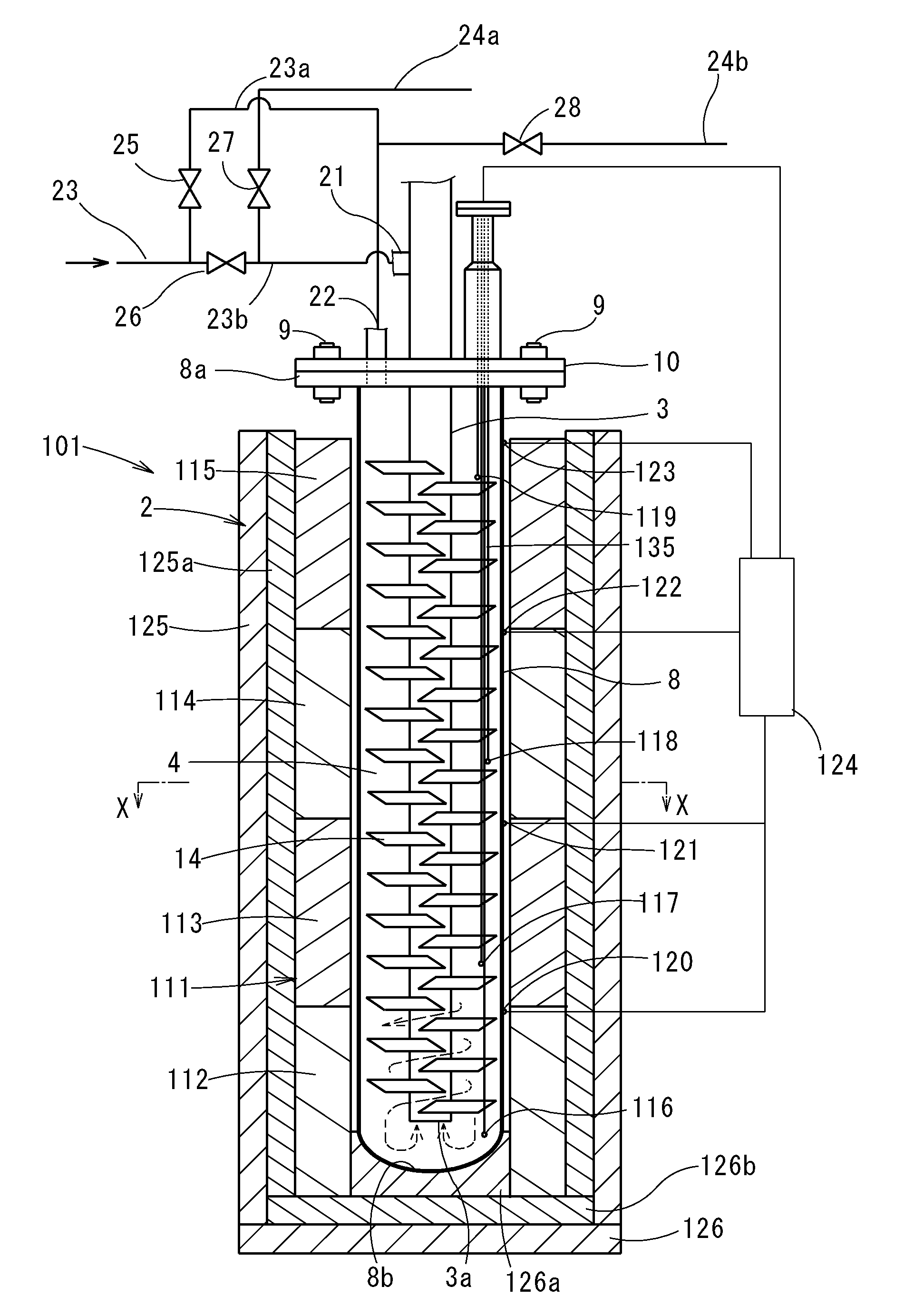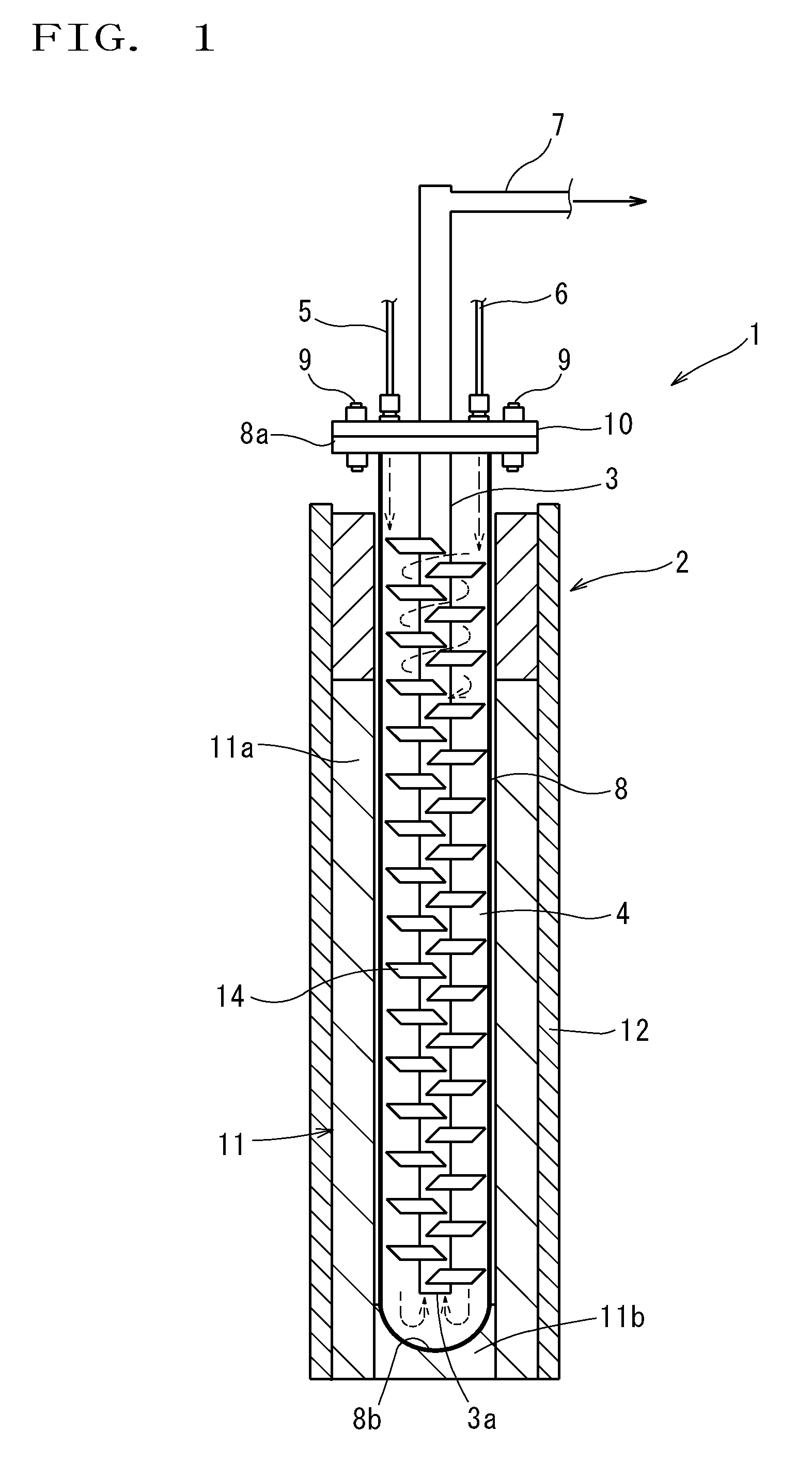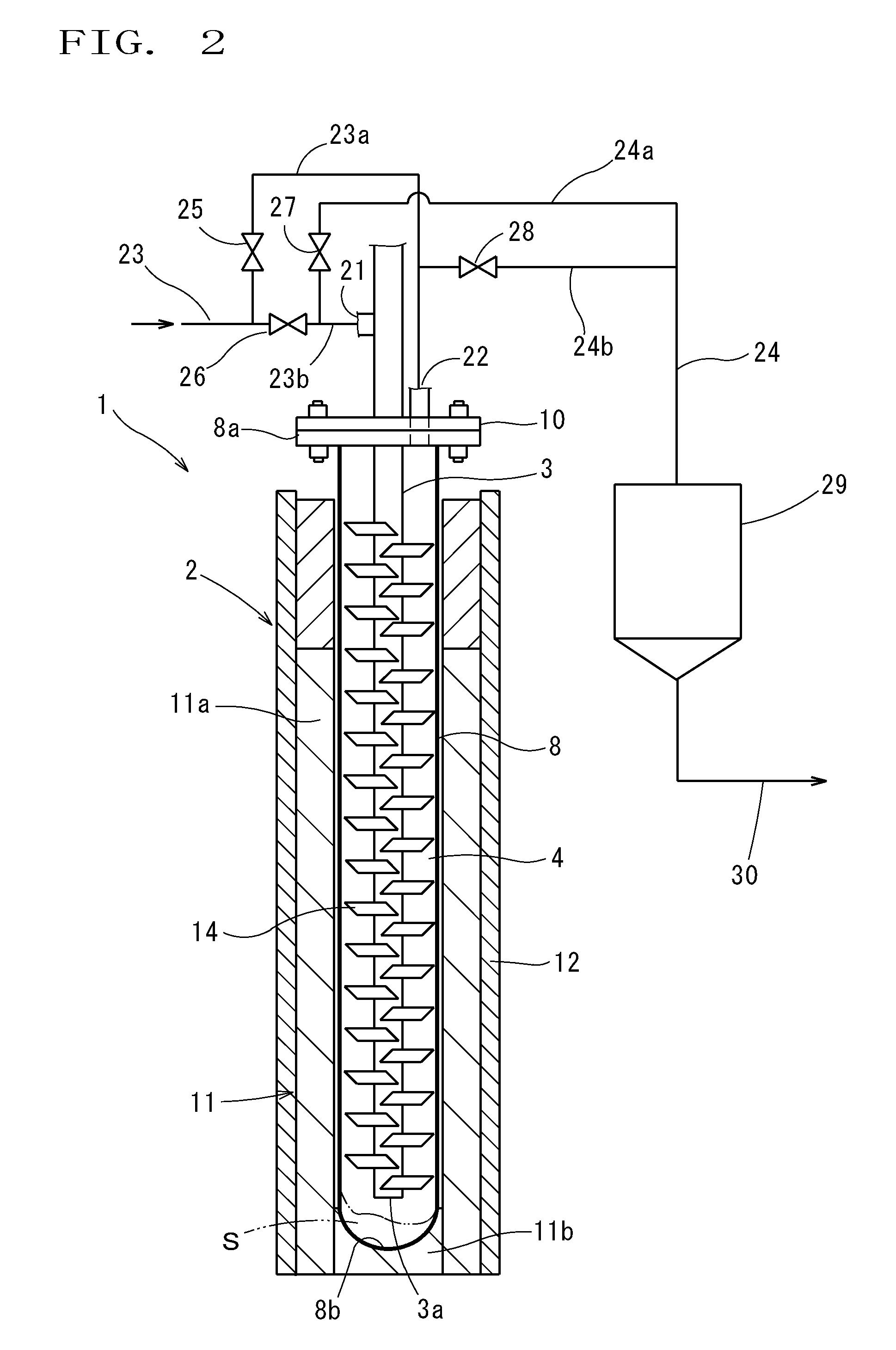Method for manufacturing trichlorosilane
a technology of trichlorosilane and trichlorosilane, which is applied in the direction of halogenated silanes, chemical/physical/physicochemical processes, silicon compounds, etc., can solve the problems of reducing the conversion rate of silicon powder to chlorosilane, reducing the fluidity of silicon powder, and high cost of hydrolytic and waste disposal processes. , to achieve the effect of reducing the manufacturing cost of polycrystalline silicon, reducing the load load ratio
- Summary
- Abstract
- Description
- Claims
- Application Information
AI Technical Summary
Benefits of technology
Problems solved by technology
Method used
Image
Examples
first embodiment
[0043]FIG. 1 to FIG. 3 show a manufacturing apparatus for trichlorosilane carrying out a manufacturing method of the present invention. The manufacturing apparatus 1 is provided with: a decomposition furnace 2 which has a tube-shape and is disposed vertically; a center tube 3 which is inserted into the decomposition furnace 2 from an upper portion to an inner-bottom portion of the decomposition furnace 2 along a center axis thereof; a polymer-supply pipe 5 which supplies polymers to an upper portion of a reaction chamber 4 which is formed at an outside of the center tube 3; a hydrogen-chloride-supply pipe 6 to the upper portion of the reaction chamber 4; and a gas-discharge pipe 7 which discharges a reacted gas from an upper-end portion of the center tube 3.
[0044]The decomposition furnace 2 is configured with: a furnace body 8 which is formed as a tube-shape having a bottom and a upper flange 8a at an upper portion thereof; an end plate 10 which is detachably jointed to the upper fl...
second embodiment
[0070]FIG. 5 shows a trichlorosilane manufacturing apparatus carrying out a manufacturing method according to the present invention.
[0071]In the trichlorosilane manufacturing apparatus 1 of the first embodiment, the polymer-supply pipe 5 and the hydrogen-chloride-supply pipe 6 are connected to the end plate 10 of the decomposition furnace 2. In a trichlorosilane manufacturing apparatus 41 of the second embodiment, the center tube 3 is protruded upward from the decomposition furnace 2, and a material-mixing pipe 42 having a larger diameter than that of the center tube 3 is provided so as to cover the center tube 3 at the protruded portion from the decomposition furnace 2. That is, the material-mixing pipe 42 and the center tube 3 are arranged as a double-pipe. The double-pipe portion extends upward from the decomposition furnace 2 by a predetermined length. The polymer-supply pipe 5 and the hydrogen-chloride-supply pipe 6 are connected to the material-mixing pipe 42 which is provided...
third embodiment
[0104]FIGS. 14A and 14B shows fluctuations of the detected inside-temperature and outside-temperature under the same condition of flow rates of the polymers and hydrogen chloride as in the third embodiment shown in FIGS. 12A and 12B.
[0105]When the deposition of silicon oxide is increased along with the decomposition of polymers, the inside-temperature (i.e., the detection value by the inside-temperature detection sensor 116) cannot increased also in the fourth embodiment even though the outputs of the cylindrical heater 112 and the furnace-bottom heater 162 are increased; and further, the outside-temperature is increased. However, the changes of temperature are less in the fourth embodiment shown in FIGS. 14A and 14B than in the third embodiment shown in FIGS. 12A and 12B.
[0106]In the fourth embodiment, the heat is efficiently transferred to polymers from the furnace-bottom heater 162 since the furnace-bottom heater 162 is located at the lower part of the furnace body 8. Furthermore...
PUM
| Property | Measurement | Unit |
|---|---|---|
| angle | aaaaa | aaaaa |
| mass % | aaaaa | aaaaa |
| mass % | aaaaa | aaaaa |
Abstract
Description
Claims
Application Information
 Login to View More
Login to View More - R&D
- Intellectual Property
- Life Sciences
- Materials
- Tech Scout
- Unparalleled Data Quality
- Higher Quality Content
- 60% Fewer Hallucinations
Browse by: Latest US Patents, China's latest patents, Technical Efficacy Thesaurus, Application Domain, Technology Topic, Popular Technical Reports.
© 2025 PatSnap. All rights reserved.Legal|Privacy policy|Modern Slavery Act Transparency Statement|Sitemap|About US| Contact US: help@patsnap.com



